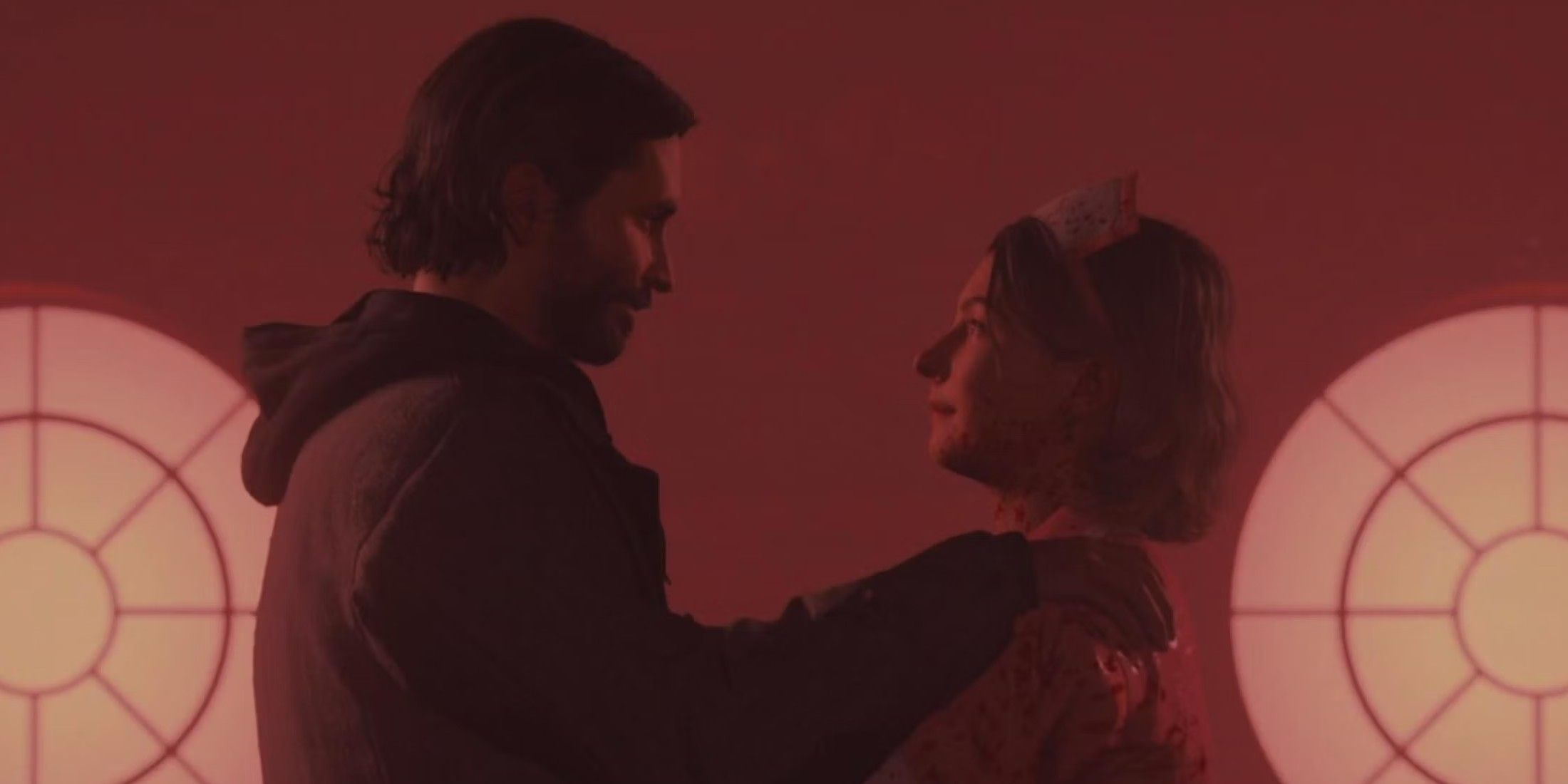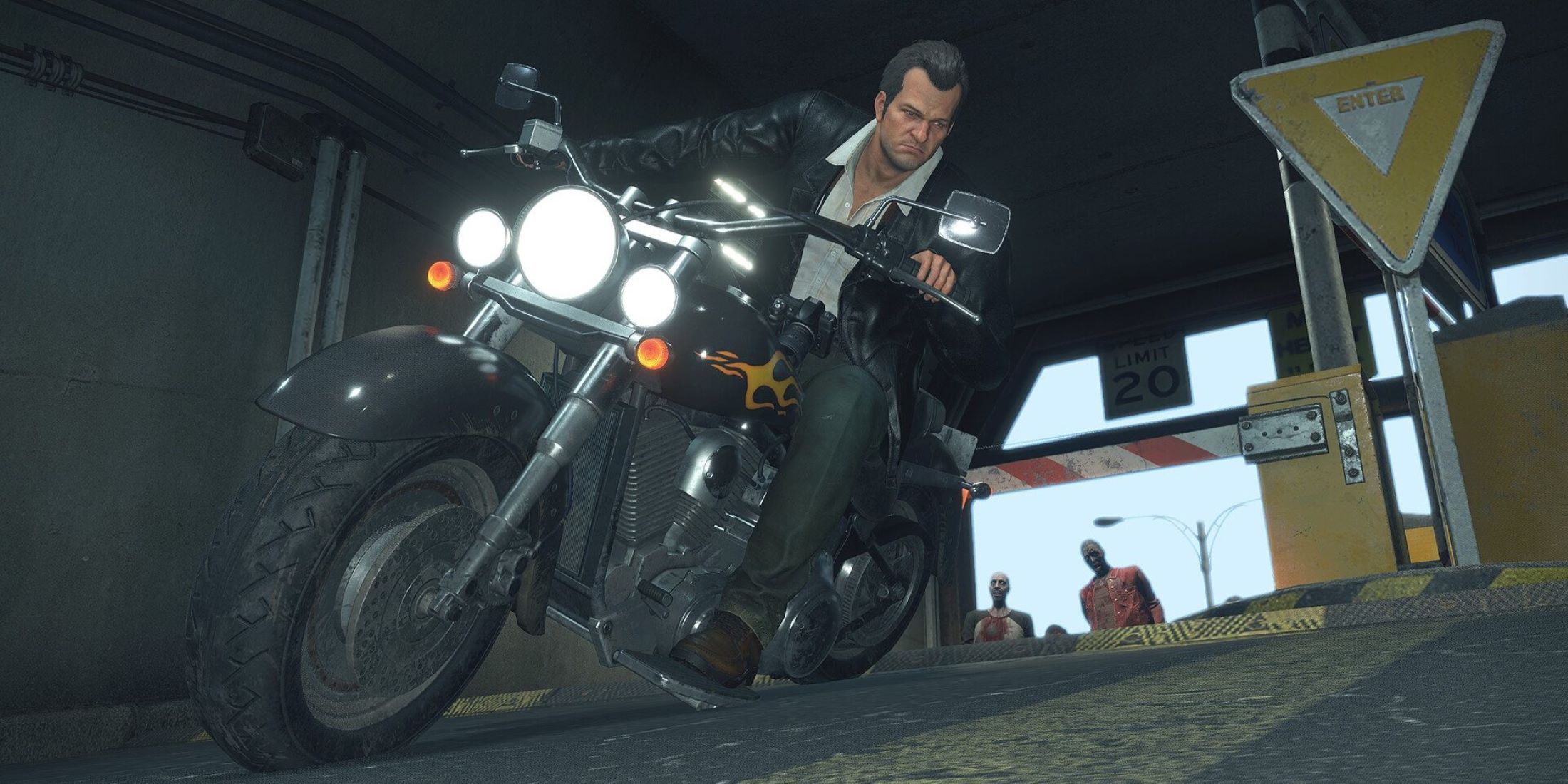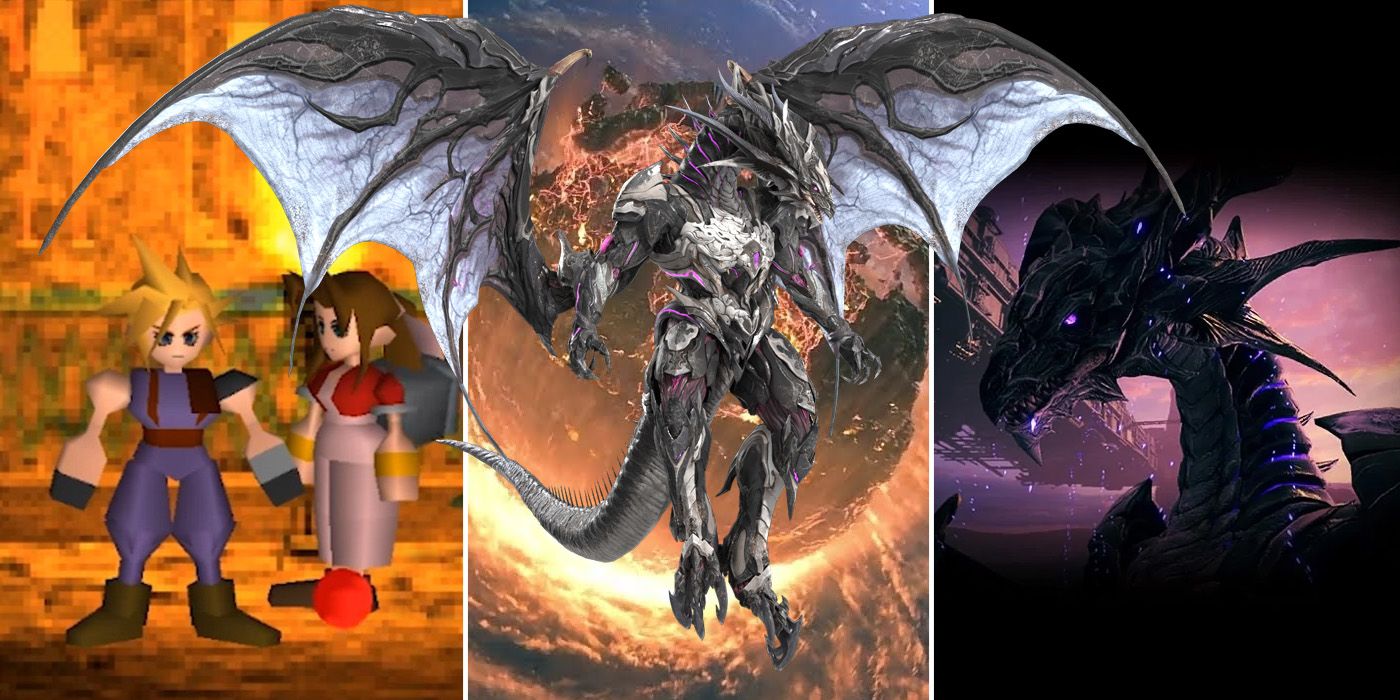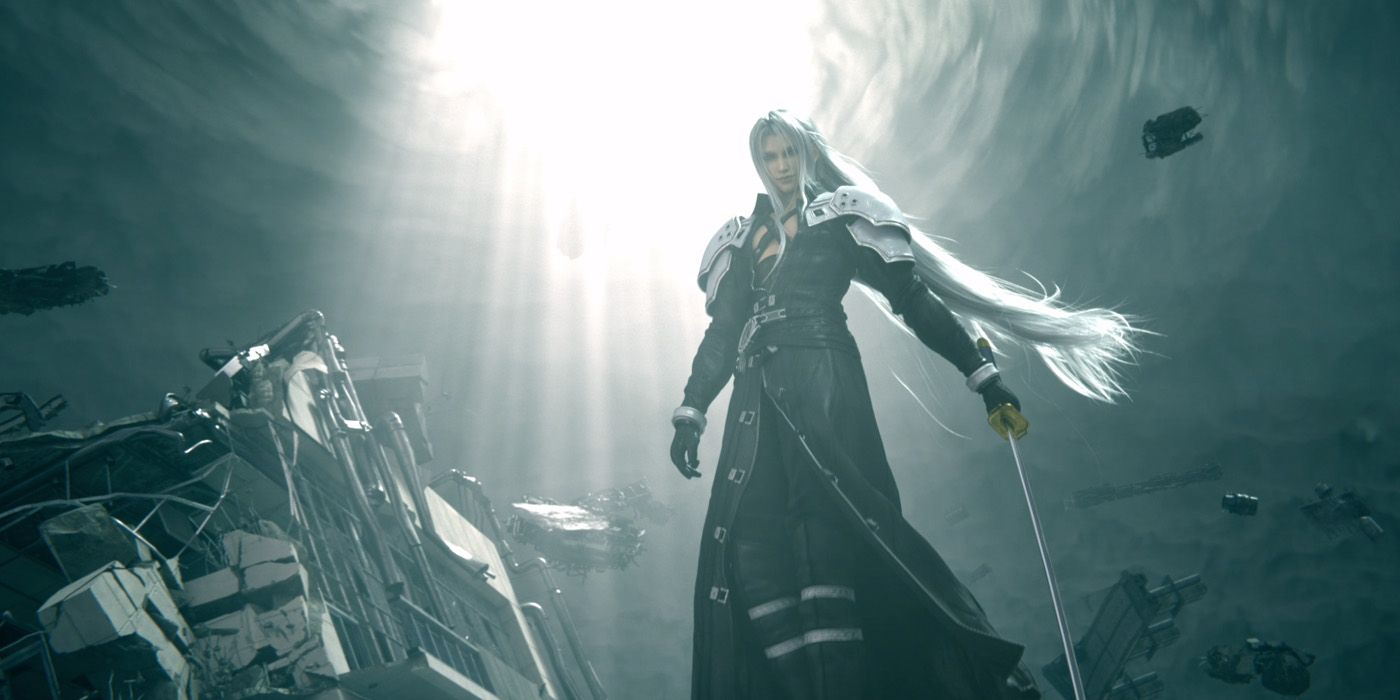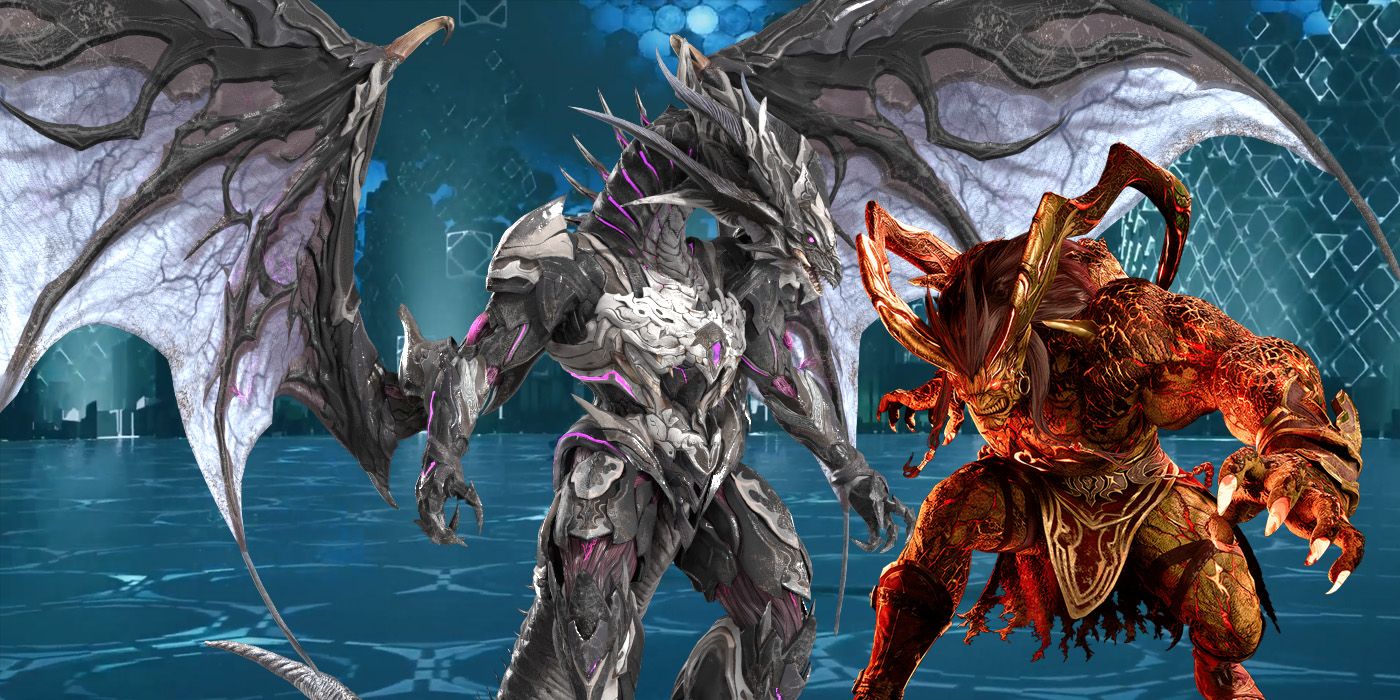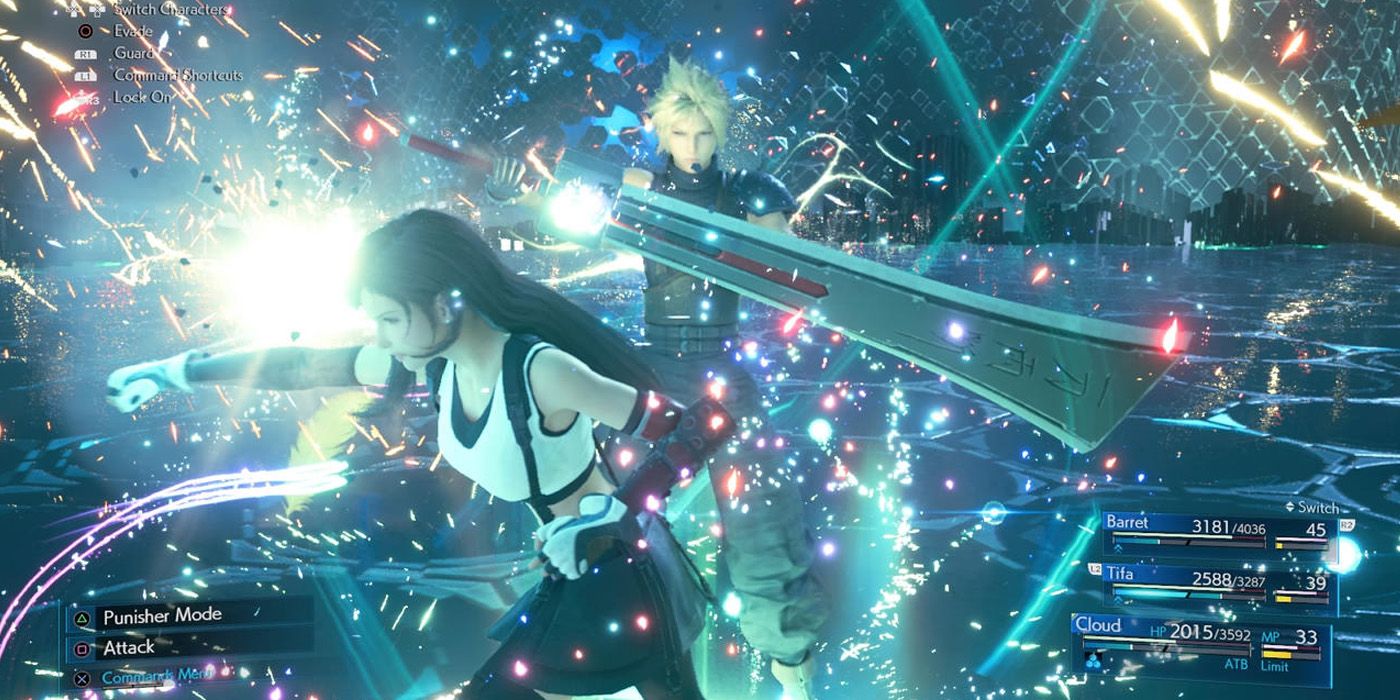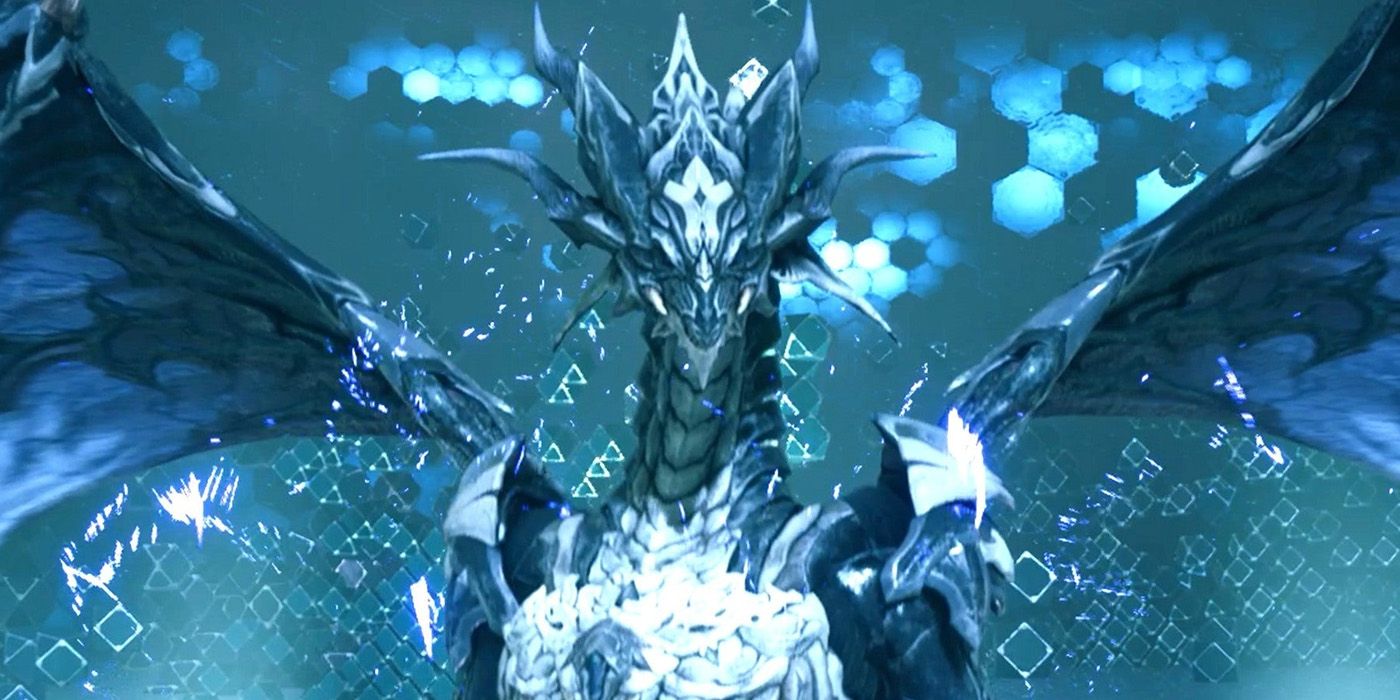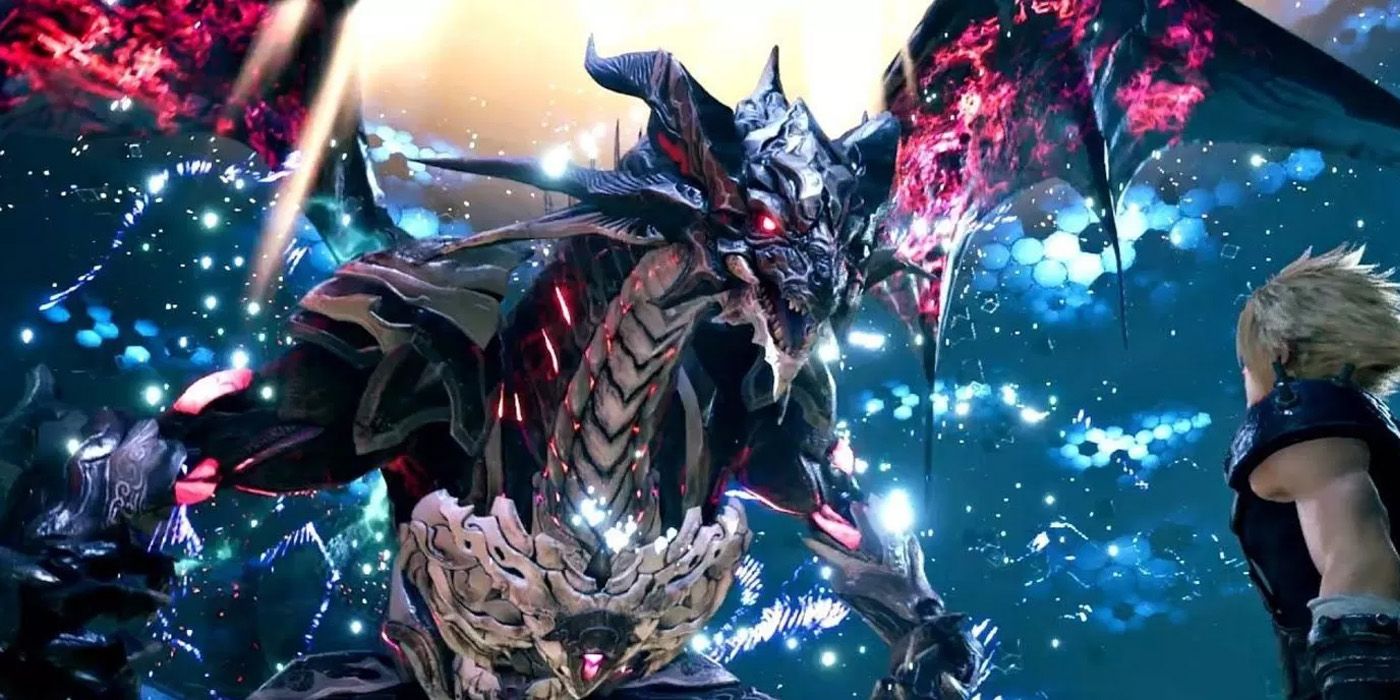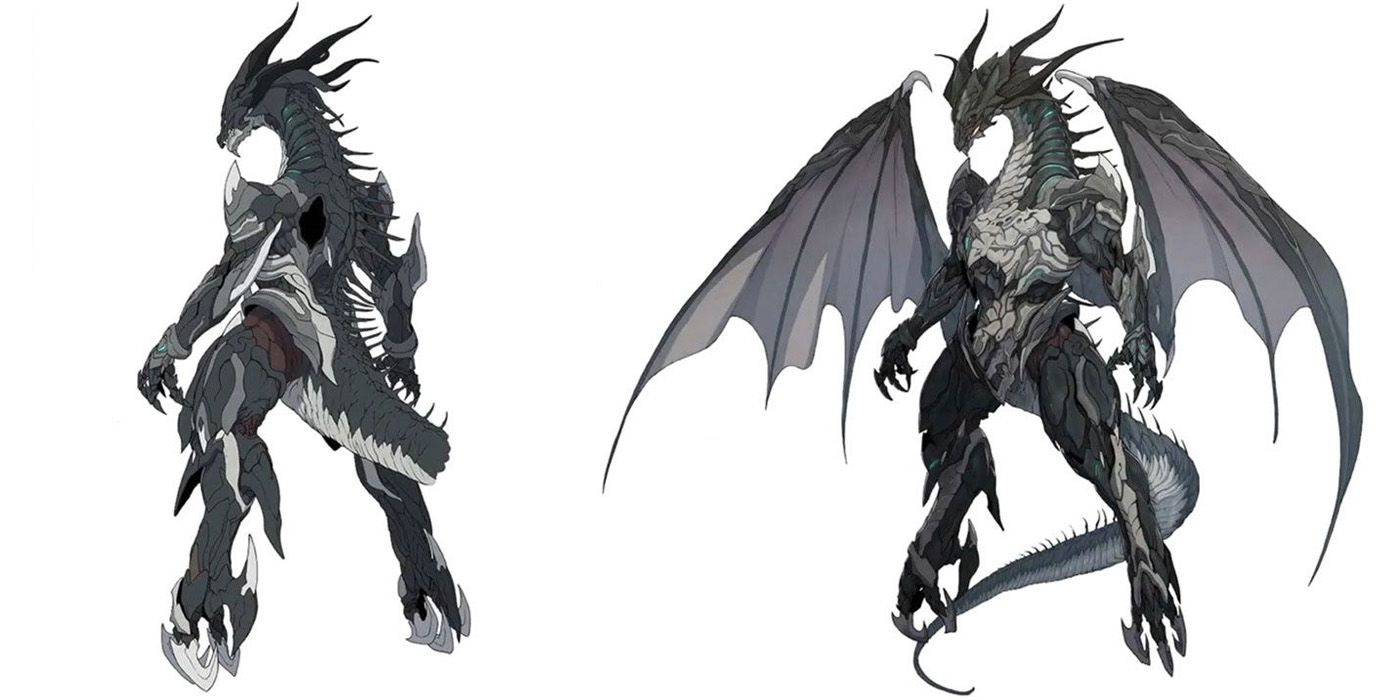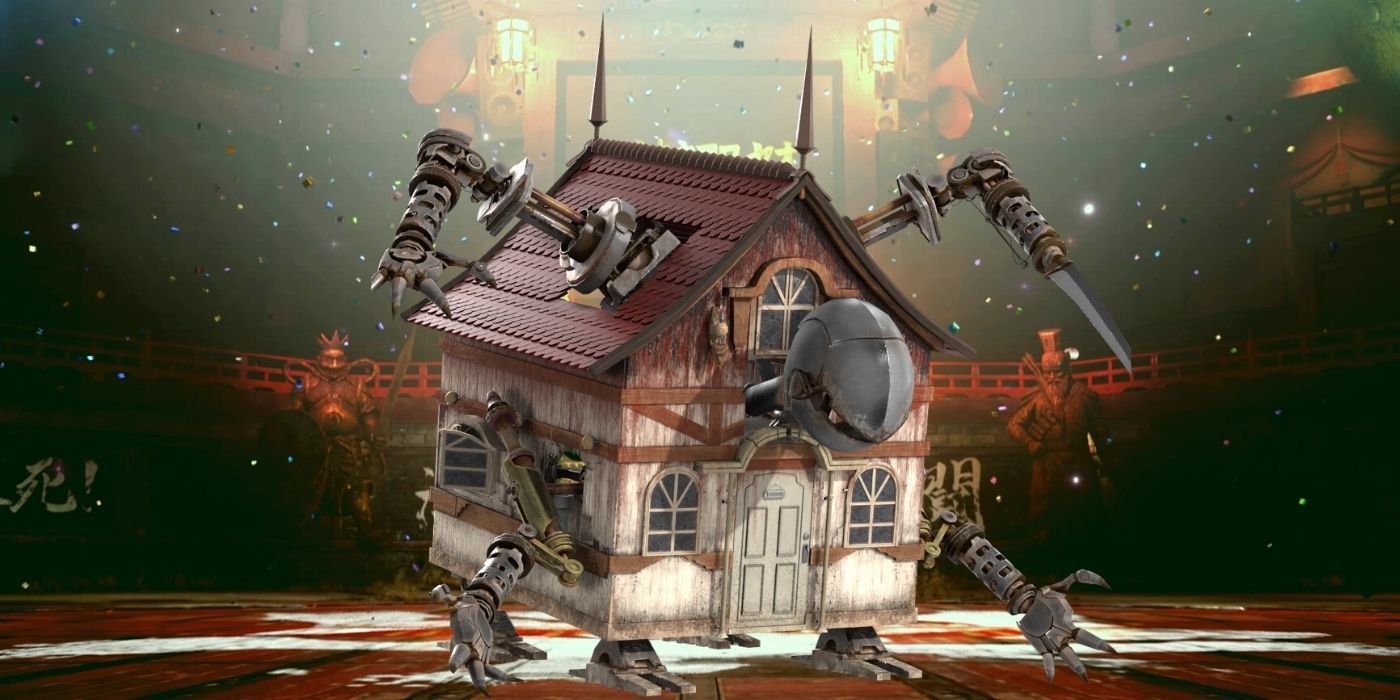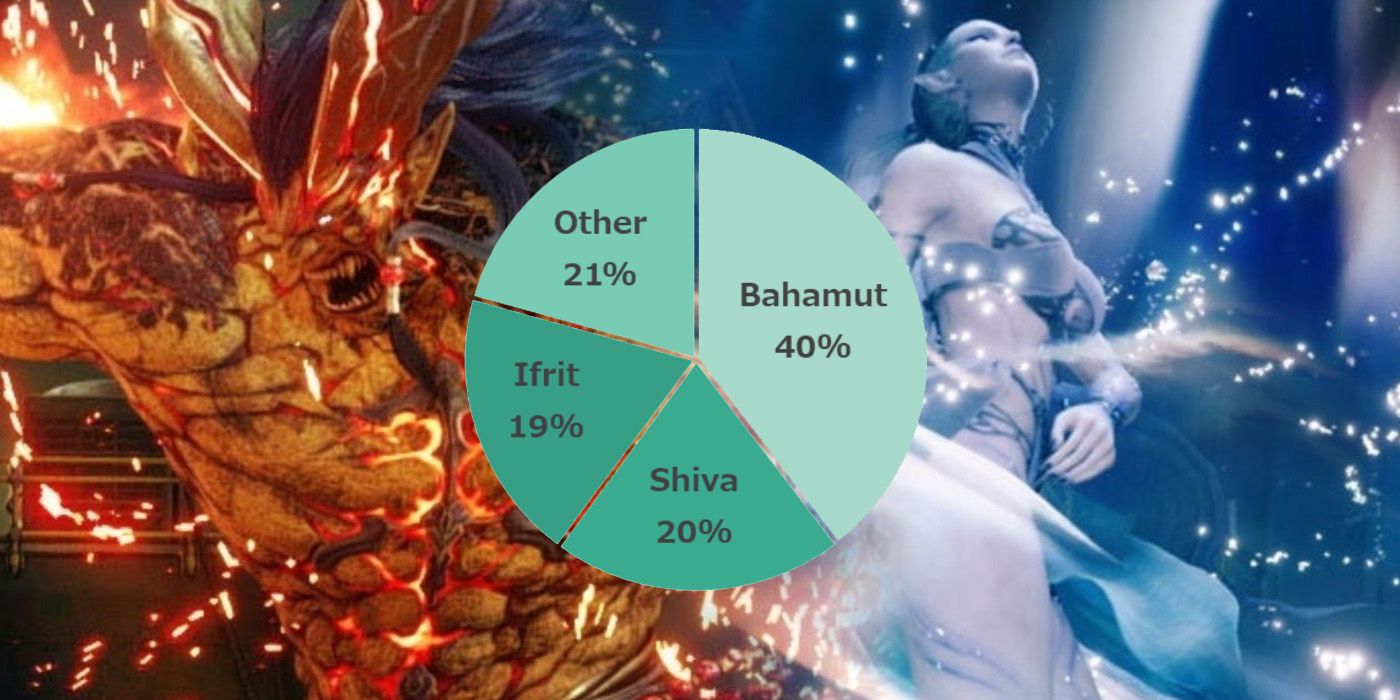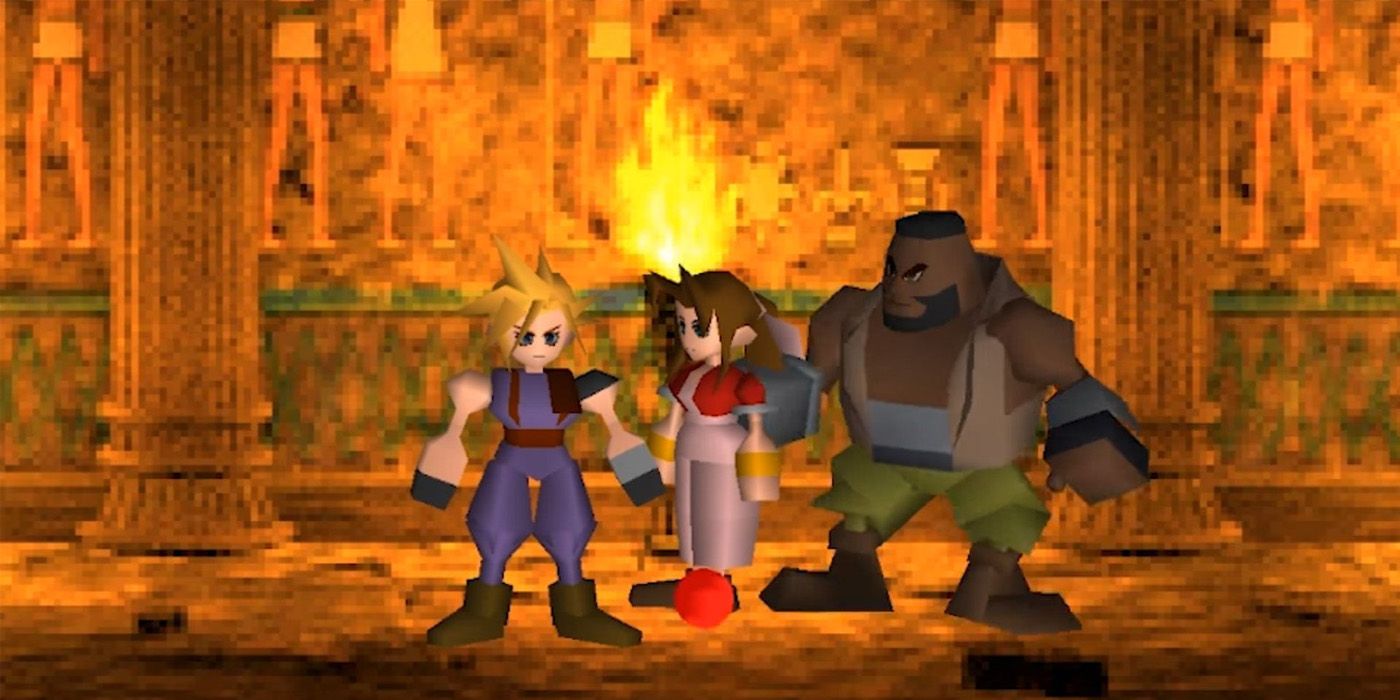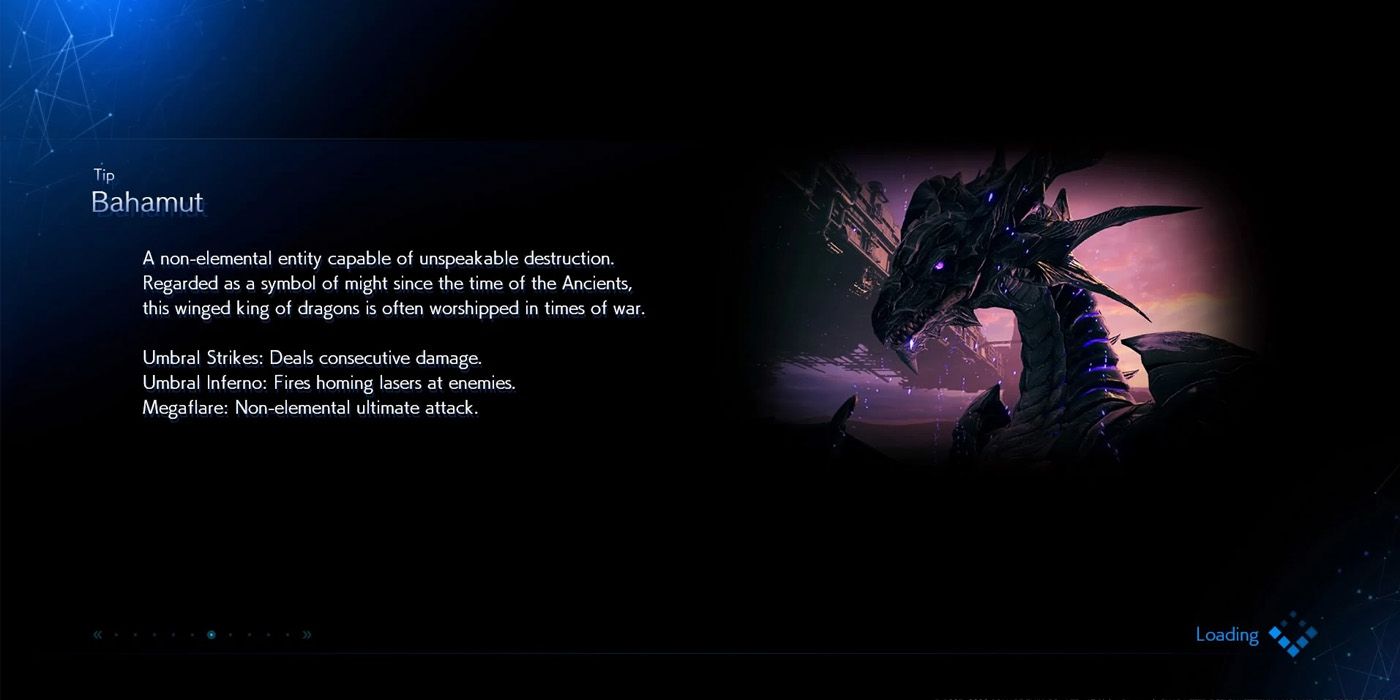Having appeared in almost every single mainline Final Fantasy game to date, Bahamut's inclusion in Final Fantasy VII Remake will have come as little surprise to many. That there were so many changes made to the winged King of Dragons, however, may well have raised one or two eyebrows amongst the fandom.
As well as his early entrance, there are quite a few differences between the version of Bahamut that shows up in the remake than those which have appeared in previous games. These aren't just limited to design choices either, but also the very lore and background of the hugely popular flying summon.
10 Its Stats Are Higher Than Sephiroth's
Despite Sephiroth being the final boss of Final Fantasy VII Remake, he is not actually the strongest opponent that players will come up against. That honor arguably goes to Bahamut, whose key stats are considerably higher than those of the One-Winged Angel in almost every measurable way.
On Normal Mode, Bahamut boasts higher HP, attack, magic attack, defense and magic defense stats than Sephiroth, with some being as much as 1.5 times higher. Things do get a little closer when playing on Hard Mode, although Bahamut still has the beating of Sephiroth in three of the five key categories and matches him in the other two.
9 It Has The Power To Summon Other Summons
Earlier entries in the Final Fantasy franchise often refer to Bahamut as a God of sorts and consistently give it the title of the King of the Dragons as well. As it turns out, these positions seem to bring with them some unusual and powerful abilities that are typically reserved for players.
During the boss rush section that proceeds the battle with the Pride and Joy Prototype, players will need to defeat Bahamut. After they've depleted around half of its health though, the Dragon King will summon Ifrit to the battle, suggesting that it may well have dominion over the game's other summonable creatures.
8 Almost All Of Its Attacks Can Be Blocked
One of the biggest differences between the combat mechanics in the remake and those found in the original game is the heavy emphasis that the remake places on blocking attacks. Generally though, only around half of the moves that players come up against can be blocked, but this ratio is far higher when battling Bahamut.
Of the summon's eleven distinct attacks, only three cannot be blocked, meaning that players can avoid taking full damage from almost 75% of its attacks. This likely has something to do with the summon's lack of elemental affinity, which would otherwise make it a lot tougher to defend against than the likes of Ifrit and Shiva.
7 It Can Only Be Summoned In Certain Areas
Bahamut is one of the largest summons in both the original game and Final Fantasy VII Remake. While this may not seem particularly important, it actually has a huge bearing on when and where players are able to summon the Dragon King into battle.
There are certain areas in Final Fantasy VII Remake that have limits on the size of the creatures that can be summoned in. This means that some locations simply will not allow players to summon Bahamut even when the time and damage conditions for doing so have already been met.
6 It Grows Stronger Shortly Before Withdrawing From Battle
Unlike in the original game where a summon will only use a single attack before departing, Final Fantasy VII Remake instead keeps them in the battle for a set period of time. In the case of Bahamut, however, how far into this period a player is will have a direct impact on the summon's attack power.
Shortly before leaving the battlefield, Bahamut will clad itself in Umbral Aura, making it considerably stronger than when it is first summoned. As a result, any ATB moves initiated by the player while Bahamut is in this state will deal a lot more damage to enemies than they otherwise would have.
5 Its Eyes Do Not Have Pupils
Like many of the other summons, Bahamut's design has gone through numerous changes over the years, but there's one rather notable change to the summon in Final Fantasy VII Remake. Unlike previous iterations, the Dragon King's eyes do not have any pupils; instead appearing as solid gray orbs.
Why exactly Square Enix opted to go with this design choice remains unclear, especially as there is no prior lore to suggest that dragons do not have pupils. Interestingly though, Bahamut's eye color does change from gray to pink while it's in its Umbral Aura phase.
4 Summoning It While Fighting Hell House Provides Some Unique Dialogue
Given that players need to have completed all of Chadley's Battle Intel Reports in order to gain access to Bahamut, it is almost impossible to use it during the initial battle with Hell House. Should the player return to Chapter 9 after acquiring the Bahamut materia, however, they'll be treated to some unique dialogue upon summoning it.
The announcers at the Corneo Colosseum, Kotch and Scotch, will each comment on the Dragon King's arrival. The former will remark that "The king of dragons has graced us with his royal presence!" while Scotch will subsequently remind the audience that their safety is not guaranteed.
3 A Fan Survey Revealed That It is The Most Popular Summon In The Game
Although it only included the summons that feature in the first part of Final Fantasy VII Remake, a fan survey carried out by Square Enix shortly after the game's release suggests that Bahamut is the series' most popular summon. Not only that though, but that he is the most popular by a staggeringly large margin.
Bahamut received 40% of the vote; which was more than its fellow long-serving summons Shiva and Ifrit managed between them. The former finished on just 20%, while Ifrit managed 19%. The remaining 21% was split between the game's other summons, with the preorder bonus summon, Carbuncle, claiming a significant portion of those extra votes.
2 It Shows Up Far Earlier In The Remake Than It Does In The Original Game
In the original release of Final Fantasy VII, players acquire the Bahamut summon materia while exploring the Temple of the Ancients to find the black materia. For whatever reason though, the summon's appearance is brought forwards quite a bit in the 2020 remake.
Most players won't unlock Bahamut until after they've completed the game due to the large amount of grinding that's needed to do so. Regardless though, obtaining Bahamut in Midgar is still far earlier than in the original game, with players no longer needing to pass through places like Mt. Corel, The Gold Saucer, Cosmo Canyon or Nibelheim to get their hands on the summon.
1 It Has Been Around Since The Time Of The Ancients
As is often the case in video games, Final Fantasy VII Remake uses loading screens to provide players with "useful" hints and facts. One such loading screen centers around Bahamut and reveals some fairly interesting information about the Dragon King's origins.
According to the screen, Bahamut has been regarded as a symbol of might since the time of the Ancients, suggesting that the creature is, at the very least, as old as the Cetra race. It also suggests that Bahamut is often worshiped in times of war, which, given the ongoing conflict between Shinra and Wutai, might just explain its early appearance in the remake.

